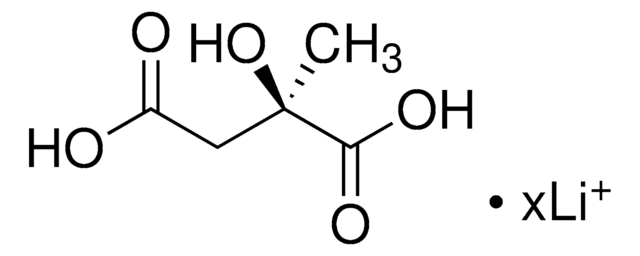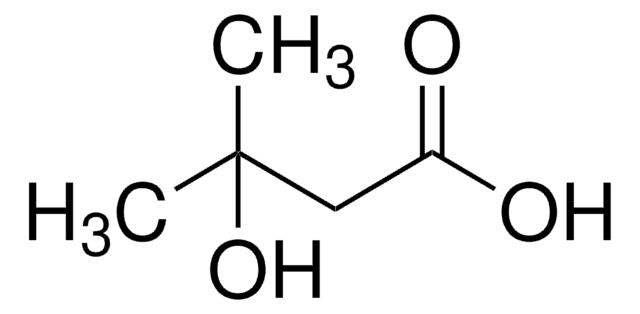44108
(E)-3-Methylglutaconic acid
≥97.0% (HPLC)
Sinónimos:
(2E)-3-Methyl-2-pentenedioic acid
About This Item
Productos recomendados
Quality Level
assay
≥97.0% (HPLC)
mp
137-143 °C
application(s)
clinical testing
format
neat
storage temp.
2-8°C
InChI
1S/C6H8O4/c1-4(2-5(7)8)3-6(9)10/h2H,3H2,1H3,(H,7,8)(H,9,10)/b4-2+
InChI key
WKRBKYFIJPGYQC-DUXPYHPUSA-N
Categorías relacionadas
Biochem/physiol Actions
signalword
Warning
hcodes
Hazard Classifications
Eye Irrit. 2 - Skin Irrit. 2
Storage Class
11 - Combustible Solids
wgk_germany
WGK 3
flash_point_f
Not applicable
flash_point_c
Not applicable
Choose from one of the most recent versions:
Certificados de análisis (COA)
Don't see the Right Version?
If you require a particular version, you can look up a specific certificate by the Lot or Batch number.
¿Ya tiene este producto?
Encuentre la documentación para los productos que ha comprado recientemente en la Biblioteca de documentos.
Nuestro equipo de científicos tiene experiencia en todas las áreas de investigación: Ciencias de la vida, Ciencia de los materiales, Síntesis química, Cromatografía, Analítica y muchas otras.
Póngase en contacto con el Servicio técnico









